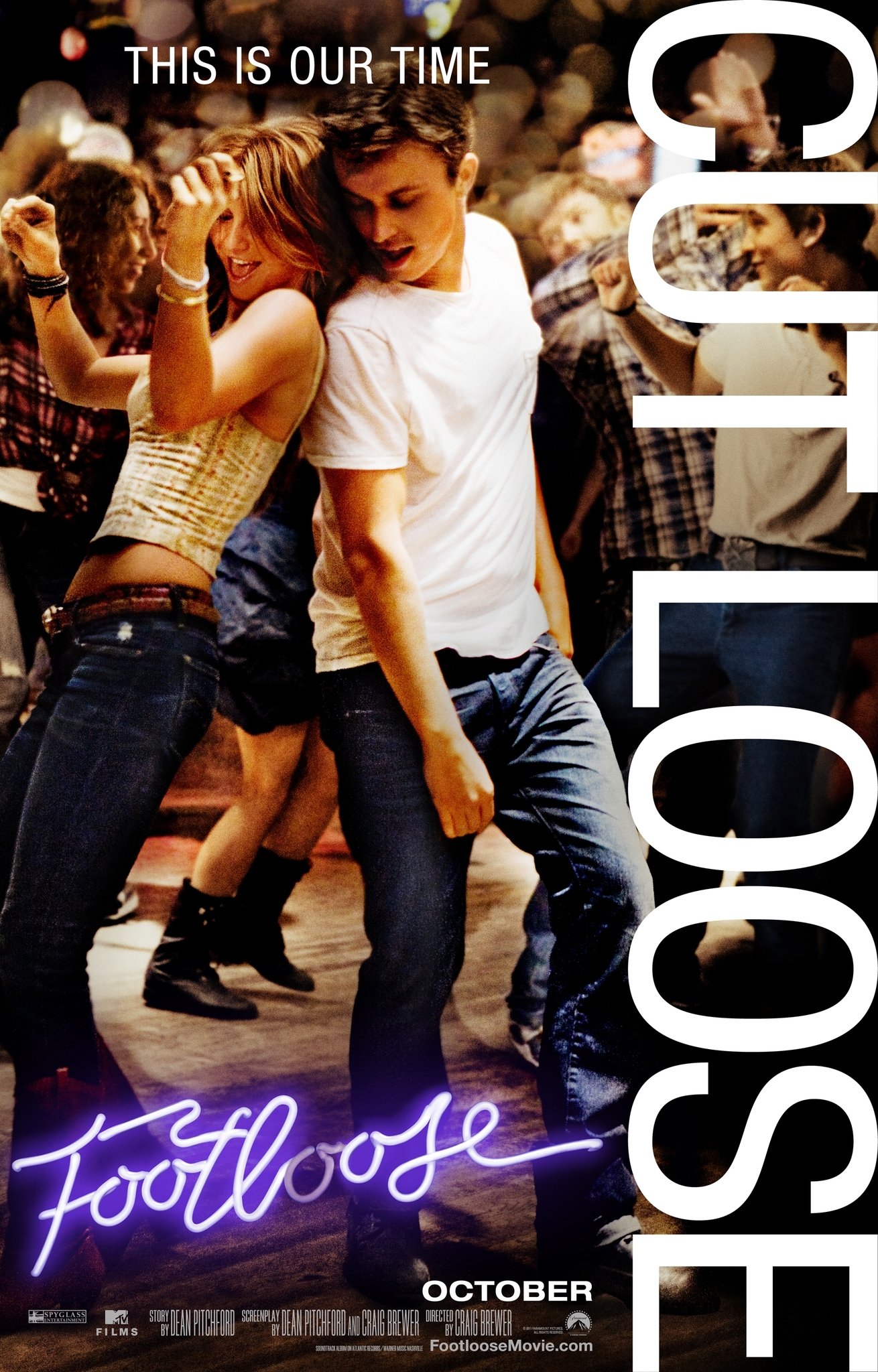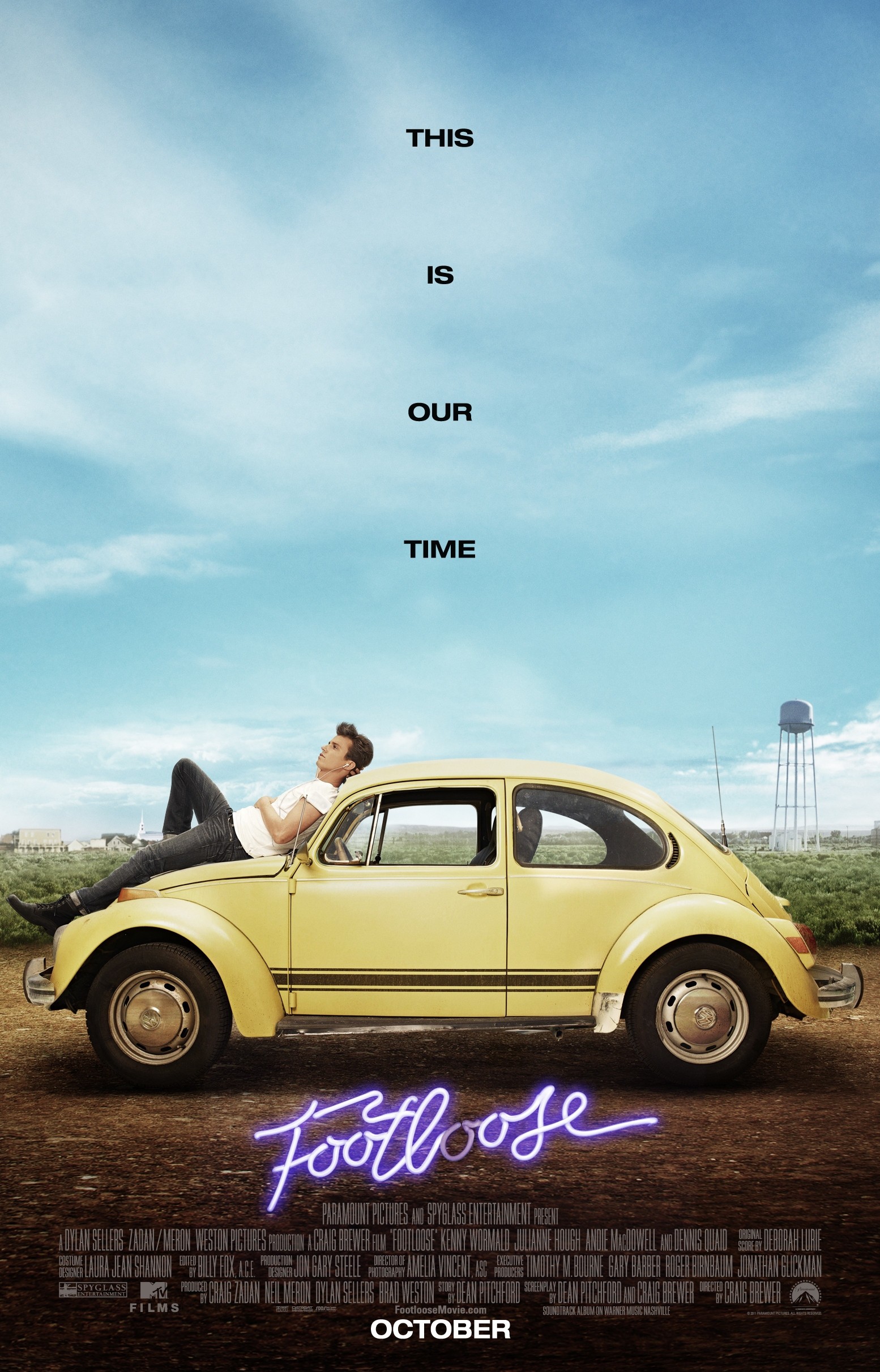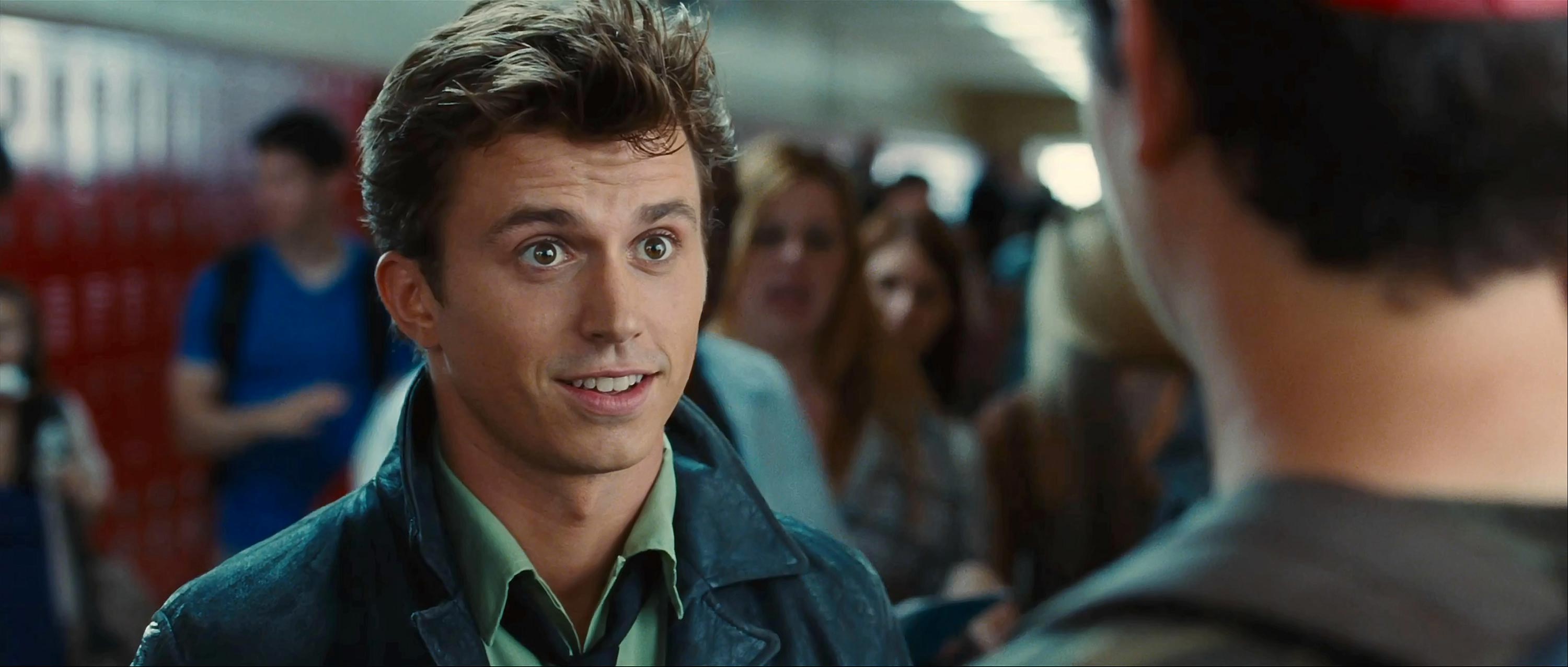Footloose 2011: A Fresh Spin On A Classic Tale
Footloose 2011 isn’t just another movie remake; it’s a vibrant reimagining of a beloved classic that resonates with modern audiences. Released almost three decades after the original, this film takes viewers on a journey filled with music, dance, and heart. It’s not just about reliving the past but embracing the present with new characters, fresh perspectives, and a soundtrack that’ll have you tapping your feet.
If you’ve ever wondered how a story about rebellion, freedom, and self-expression could still hold its charm in today’s world, the 2011 version of Footloose proves that some stories never get old. The film retains the essence of the original while adding layers that speak directly to contemporary issues like censorship, community dynamics, and personal growth.
So whether you’re a fan of the original or completely new to the world of Footloose, this article dives deep into everything you need to know about the 2011 adaptation. From its plot twists to its star-studded cast, we’ll explore why this version deserves a spot in your movie-watching list.
- Javi Marroquin Rising Star In The Football World
- Sean Connery The Iconic Legend Who Redefined Coolness
Table of Contents
- Background of Footloose
- Plot Summary of Footloose 2011
- Main Cast and Characters
- The Iconic Music
- Key Differences Between 1984 and 2011 Versions
- Exploring the Themes
- Critical Reception and Controversies
- Cultural Impact
- How Does Footloose 2011 Compare?
- Conclusion
Background of Footloose
Before diving into the 2011 version, let’s take a quick trip back to where it all began. Footloose originally hit theaters in 1984, directed by Herbert Ross and starring Kevin Bacon as Ren McCormack. The film was an instant hit, thanks to its powerful message about standing up for what you believe in and its unforgettable soundtrack. Fast forward to 2011, when director Craig Brewer decided to revisit this classic with a fresh perspective.
This remake wasn’t just about nostalgia; it aimed to capture the spirit of the original while addressing modern sensibilities. With a budget of around $25 million, the production team poured their hearts into creating a film that would resonate with both old fans and new viewers.
Why Remake Footloose?
Some might ask, why remake a movie that’s already considered iconic? Well, think about it—times change, and so do audiences. What worked for viewers in the '80s might not hit the same chord today. By updating the story, the 2011 version brings Footloose into the modern era without losing its soul. It’s like taking an old recipe and adding a few secret ingredients to make it even better.
- John Wick 3 The Ultimate Action Extravaganza
- Caitriona Balfe The Star Who Captivated Hearts With Her Talent And Beauty
Plot Summary of Footloose 2011
The story revolves around Ren McCormack, a city kid who moves to the small town of Bomont after losing his parents in a car accident. In this tight-knit community, dancing has been banned following a tragic accident involving a school bus. Ren quickly realizes that this ban isn’t just about safety—it’s about control. As he befriends the locals and sparks romance with Moore, the rebellious daughter of Reverend Shaw Moore, Ren sets out to change the rules and bring dance back to the town.
But things aren’t as simple as they seem. Reverend Moore is determined to keep the status quo, believing that dancing leads to sin and destruction. Meanwhile, Ren faces his own struggles, balancing his desire for freedom with the weight of responsibility. In the end, it’s a battle of wills—and hearts—that decides the fate of Bomont.
What Makes This Version Unique?
While the core plot remains similar to the original, the 2011 adaptation adds depth to the characters and explores themes more relevant to today’s world. For instance, the film delves deeper into the psychological effects of trauma and how communities deal with loss. It also highlights the importance of individuality and self-expression, making it relatable to younger audiences.
Main Cast and Characters
Every great film needs a stellar cast, and Footloose 2011 delivers just that. Let’s break down the main players:
- Kenny Wormald as Ren McCormack: The charming lead who brings energy and passion to the screen. Kenny not only acts but also performs his own dance moves, adding authenticity to his role.
- Julianne Hough as Ariel Moore: The fiery and independent love interest whose journey of self-discovery drives much of the plot. Julianne’s talent as a dancer shines through in every scene.
- Dennis Quaid as Reverend Shaw Moore: The stern yet ultimately loving father who represents the conservative side of the town. Dennis brings gravitas to the role, making Reverend Moore more than just a one-dimensional villain.
- Andrea Anders as Wendy Jo: The best friend and confidante who supports Ariel through thick and thin. Andrea adds humor and heart to the film.
A Glimpse at the Supporting Cast
While the main characters get most of the spotlight, the supporting cast deserves recognition too. From the quirky townsfolk to the rebellious teens, each character contributes to the rich tapestry of Bomont. These roles add layers to the story, making it feel more grounded and realistic.
The Iconic Music
No discussion about Footloose would be complete without mentioning the music. The 2011 soundtrack pays homage to the original while introducing new tracks that fit the modern vibe. Songs like “Footloose” and “Let’s Hear It for the Boy” are reimagined with fresh arrangements, keeping the nostalgia alive while appealing to younger ears.
But it’s not just about rehashing old hits. The film also features original compositions that capture the essence of the story. These songs serve as emotional anchors, enhancing key moments in the film and leaving a lasting impression on viewers.
How Music Drives the Narrative
Music isn’t just a background element in Footloose—it’s a driving force. Each song is carefully placed to reflect the characters’ emotions and motivations. For example, during the climactic dance scene, the music swells, amplifying the tension and excitement. It’s moments like these that remind us why Footloose remains such a powerful cinematic experience.
Key Differences Between 1984 and 2011 Versions
While both versions share the same foundation, there are notable differences that set them apart. Here are a few:
- Character Development: The 2011 version spends more time developing the characters, giving them richer backstories and motivations.
- Themes: The remake tackles more contemporary issues, such as mental health, community dynamics, and the impact of trauma.
- Music: Although the original soundtrack is legendary, the 2011 version incorporates modern sounds and styles, making it more accessible to today’s audiences.
These changes don’t detract from the original’s charm; instead, they enhance it by bringing fresh perspectives to the table.
Which Version Should You Watch?
That depends on your preferences. If you’re a fan of classic cinema, the 1984 version is a must-watch. But if you’re looking for a film that speaks to today’s world, the 2011 adaptation offers a compelling update. Ultimately, both versions have their merits, and watching them side by side can provide a fascinating comparison.
Exploring the Themes
Footloose 2011 isn’t just a dance movie—it’s a story about breaking free from constraints and finding your voice. Key themes include:
- Rebellion: The film celebrates the courage to challenge authority and fight for what you believe in.
- Community: It explores how communities can either stifle or uplift individuals, depending on their attitudes and actions.
- Self-Expression: Dancing becomes a metaphor for expressing oneself freely, regardless of societal norms.
These themes resonate deeply with audiences, reminding us of the importance of standing up for ourselves and others.
Why These Themes Matter Today
In a world where conformity often takes precedence over individuality, Footloose serves as a reminder that we all deserve the freedom to be ourselves. Whether it’s through dance, art, or any other form of expression, the film encourages us to embrace our uniqueness and inspire others to do the same.
Critical Reception and Controversies
Not everyone was a fan of the 2011 remake. Critics praised the performances and the updated soundtrack but questioned the necessity of the reboot. Some argued that the original was untouchable, while others felt the remake didn’t bring anything new to the table.
Despite the criticism, the film found a loyal fanbase who appreciated its efforts to modernize the story. It’s a testament to the enduring appeal of Footloose that even a remake can spark passionate debates.
Addressing the Controversies
One of the biggest controversies surrounding the film was the decision to cast younger actors for the lead roles. Some fans felt this detracted from the authenticity of the story, while others believed it added a fresh perspective. Ultimately, these debates only highlight the film’s impact and relevance.
Cultural Impact
Footloose 2011 may not have reached the same level of acclaim as its predecessor, but it left its mark on popular culture. The film inspired a new generation of dancers and musicians, proving that the story of Footloose still has the power to inspire and entertain.
Its influence extends beyond the screen, with fans incorporating its themes into their daily lives. Whether it’s through dance classes, community events, or simply embracing their inner rebel, people continue to draw inspiration from this timeless tale.
Legacy of Footloose
Both versions of Footloose have contributed to the film’s legacy, ensuring its place in cinematic history. They remind us that stories about self-discovery and freedom will always find an audience, no matter the era.
How Does Footloose 2011 Compare?
When comparing the two versions, it’s important to remember that they serve different purposes. The original is a product of its time, capturing the spirit of the '80s with its bold visuals and iconic soundtrack. The remake, on the other hand, updates the story for a new generation, using modern techniques and sensibilities to tell a familiar tale.
Ultimately, both versions have their strengths, and it’s up to viewers to decide which resonates more with them. What matters most is that Footloose continues to inspire and entertain audiences around the world.
Conclusion
Footloose 2011 isn’t just a remake—it’s a celebration of a classic story told through a modern lens. With its engaging plot, talented cast, and powerful themes, it offers something for everyone. Whether you’re a longtime fan or a newcomer to the world of Footloose, this film is sure to leave a lasting impression.
So why not give it a watch? Who knows—you might just find yourself tapping your feet and humming along to the soundtrack. And if you enjoyed this article, don’t forget to share it with your friends and explore more content on our site. After all, sharing is caring, and we’d love to hear your thoughts in the comments below!
- David Spade The Comedy Legend You Cant Help But Love
- Nicole Kidman Kids A Deep Dive Into The Family Life Of The Hollywood Icon

Footloose (2011) Movie Reviews COFCA

Footloose (1 of 6) Mega Sized Movie Poster Image IMP Awards

Footloose (2011) wallpapers, Movie, HQ Footloose (2011) pictures 4K